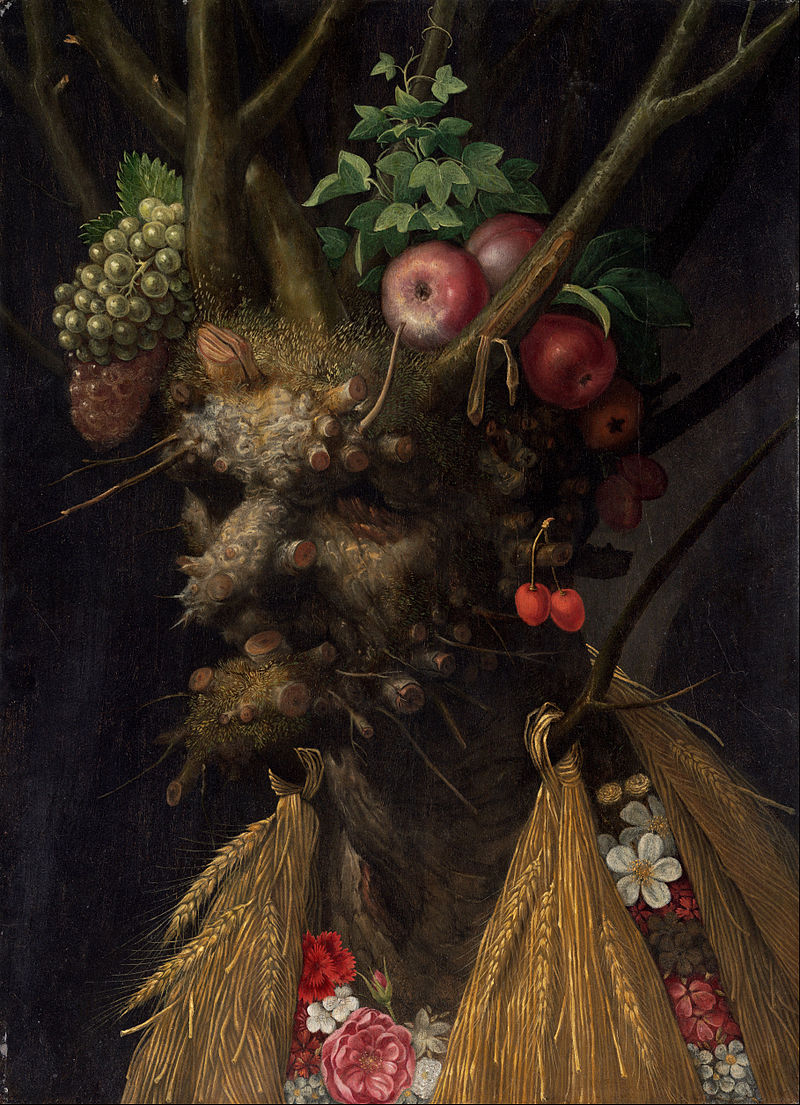
LIFE AS MYTH
![]()
JOURNAL
![]()
JOURNAL 2008
![]()
Impressions at sunrise
Finding the inner muse
![]()
AUTUMN 2008
Portraits of self
![]()
LIFEWORKS
![]()
ATLAS
![]()

AUTUMN 2008
GIUSEPPE ARCIMBOLDO 1590
Four seasons in one head. 1590. National Gallery of Art (Washington, DC). *Parnassus is a mountain in central Greece. In ancient mythology, it was the home of the Muses and the Delphic Oracle was on its slopes.
When we discover that the truth is already in us, we are all at once our original selves.
Dogen (1200-53), Buddhist monk and philosopherGiuseppe Arcimboldo (1527-93) worked as court portraitist and festival organizer during the reigns of three Hapsburg emperors: Ferdinand I (1558-1564), Maximilian II (1564-1576), Rudolph II (1576-1612). Arcimboldo is best known for allegorical "composed head" portraits, with Vertumnus: Portrait of Rudolph II being one of the best known examples. In this portrait Arcimboldo imagines the king as Vertumnus, the Roman god of metamorphosis, vegetation and the four seasons. Rudolph II was so pleased by the painting that he granted Arcimboldo the title of Count of Palantine.
The featured painting, Four seasons in one head, was part of a public exhibition only recently (2007) and may be a self-portrait of the artist. An alternative theory holds that the painting is not the artist but rather a summation of Arcimboldo's oeuvre.
There has been speculation among art historians that these composed works suggest some form of mental illness. However, that theory is not very persuasive when considering the portraits within the context of the Hapsburg court and, most especially, the reign of Rudolph II. Under Rudolphine rule, Prague became one of the foremost centers for arts and sciences on the European continent. Some of the most important artists, scientists and scholars came together to collaborate, earning Prague the designation Parnassus of the arts*. In this inter-disciplinary atmosphere, Arcimboldo flourished: painting, designing wunderkammers and hydraulic machines, creating a musical notation system using color.
Not long after Arcimboldo died, the portraits fell out of fashion. It was not until the twentieth century that they attracted new interest, having a significant influence on the Surrealism movement and the work of Salvador Dali.

